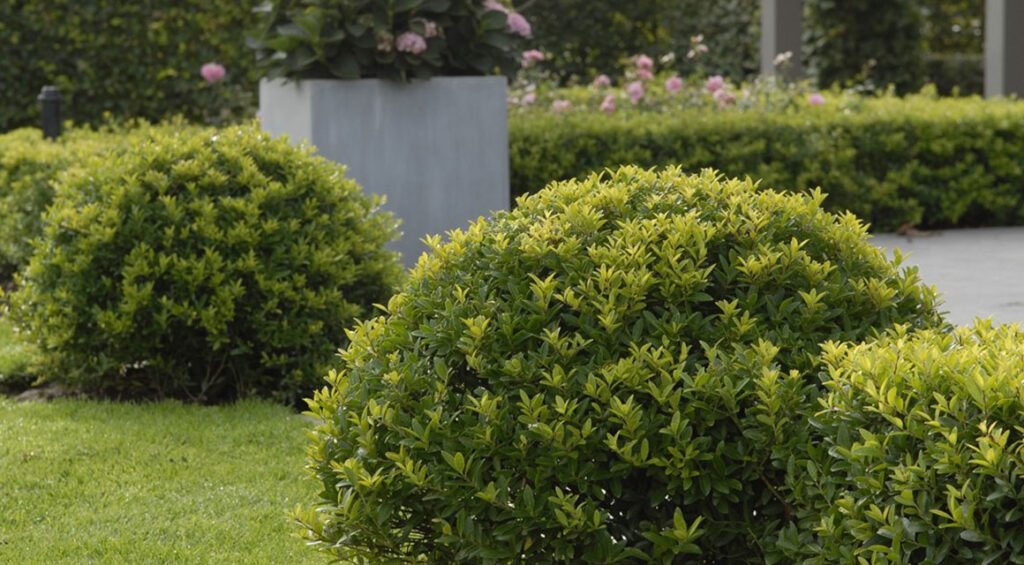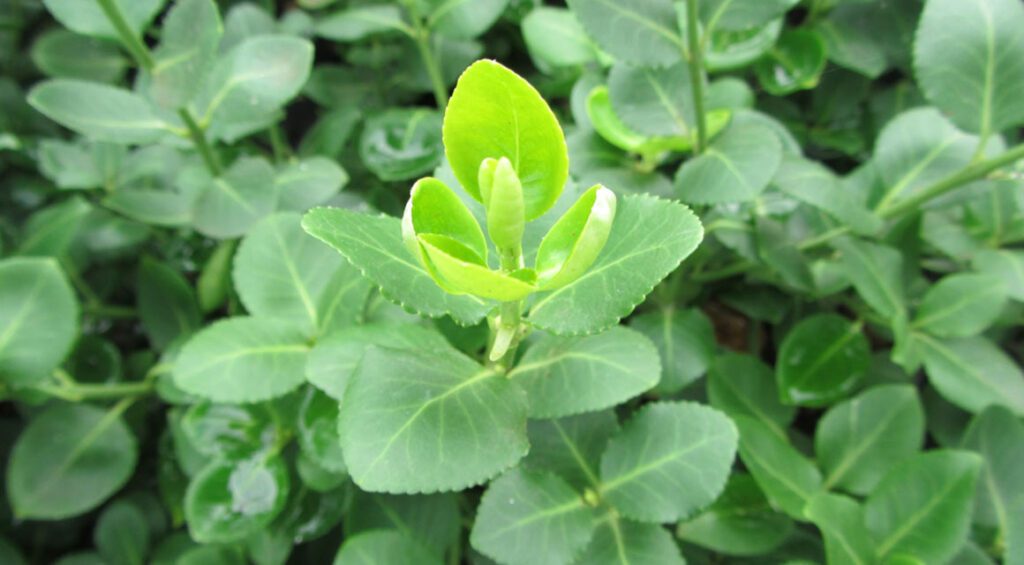The days when people exclusively used boxwood as a hedge plant for topiary are definitely over. Boxwood is losing more and more popularity, because the once popular hedge plant is very susceptible to fungal diseases. In addition, it is attacked by the boxwood borer, which eats it completely bald. Fortunately, there are other hedge plants that are suitable for topiary. So nothing stands in the way of a plant cut into shape. Create the beautiful, classic garden that you have always dreamed of.

Yew
Yew trees are popular for topiary. With these conifers can create the most beautiful creations. Yews are ideal for topiary in many ways. Unlike many other conifers, this conifer grows very slowly. Therefore, the pruning shape is maintained for a long time. Yews also grow very compactly, which means that the shapes are always opaque rather than translucent. Simple spheres or pyramids, but also more complicated cut shapes are quite possible with a yew. Yews are also well tolerant of pruning.
Yews, by the way, are the only conifers that recover well after radical pruning. Yews can even be pruned back to the old wood: This is unique. With other hedge conifers this is impossible in any case, because they will not sprout again in the bare places. Yews, however, form new shoots on old wood and have recovered within a short time. All these characteristics make yew particularly suitable for topiary. Although all varieties of yew can be used for topiary, we particularly recommend the common yew (Taxus baccata).

Thuja
Thuja (tree of life) is also ideal for topiary. However, more care is needed than with yew: thuja will not resprout if cut back to the old wood. Any Thuja can be used for topiary, but we especially recommend Thuja ‘Emerald’. This conifer grows a little slower than the other varieties. Its growth habit is also very compact, especially if it is pruned regularly. In addition, Thuja ‘Emerald’ looks a bit more elegant and graceful than many other thuja.
Want to use thuja for topiary? Keep in mind that complicated designs are difficult to keep in shape. It does require a little experience in the field of topiary. Start with simple shapes and gain experience before moving on to a real figure. Pruning is a little more challenging with thuja than with yew. After all, thuja grows a little less compact than yews. However, if you just enjoy performing topiary and don’t mind spending more time pruning, Thuja is just the conifer for you.

Japanese holly
Japanese holly (Ilex crenata) is a hedge plant that looks very similar to boxwood. It is not for nothing that it is considered an ideal boxwood alternative. Are you looking for a hedge plant for topiary that resembles boxwood? Then it’s best to take one of the many varieties of holly. Japanese holly ‘Dark Green’ is great for topiary. Its dark green color and small, elegant leaves are strongly reminiscent of boxwood. The advantage of a Japanese holly is its insensitivity to boxwood diseases. The Japanese holly is also avoided by the boxwood borer.
Japanese holly ‘Dark Green’ is not the only variety suitable for topiary. Ilex crenata ‘Green Hedge’, ‘Convexa’, ‘Blondie’ and Ilex maximowicziana are also suitable for this. This comes from the compact growth habit combined with the relatively slow growth. Note that Japanese holly grows somewhat faster than boxwood. Therefore, you will always need to keep a slightly closer eye on a holly that has been pruned into shape than a boxwood. Prune a bit if the figure is in danger of losing its shape. However, the difference in growth is small and certainly not a reason to avoid Japanese holly as a boxwood alternative.
Other boxwood alternatives are less suitable for topiary. Take, for example, hedge myrtle (Lonicera nitida), also known as honeysuckle. As a boxwood replacement for simple hedges, this plant is highly recommended. Narrow, formal hedges are no problem with Lonicera nitida. However, when it comes to topiary, it becomes a bit more difficult. This hedge plant grows much faster than boxwood, which means it needs to be pruned often to keep it in shape. Also, hedge myrtle does not grow as compact as boxwood or Japanese holly.

More hedge plants for topiary
The hedge plants mentioned above are those that are best suited for topiary. However, you don’t have to limit yourself to these plants if you want to topiary your hedge. In fact, almost any evergreen hedge plant can be pruned into different shapes if they are not too fancy. Some garden owners will trim a cherry laurel shrub planted as a specimen into a simple ball shape. Of course, the result will never be as compact as a boxwood, yew or Japanese holly, but your garden will also be elegantly enhanced with a cherry laurel cut into shape.
You can also use creeping spindles for topiary. This hedge plant is also sometimes used as a boxwood substitute. In addition to the conifers thuja and yew, other conifers can be pruned into shape. An example is the false cypress, although the result will not be as narrow as with yew or Thuja ‘Emerald’. Are you interested in topiary and looking for a hedge plant other than boxwood for this purpose? In our webshop you can quickly and easily order all the hedge plants mentioned on this page.

